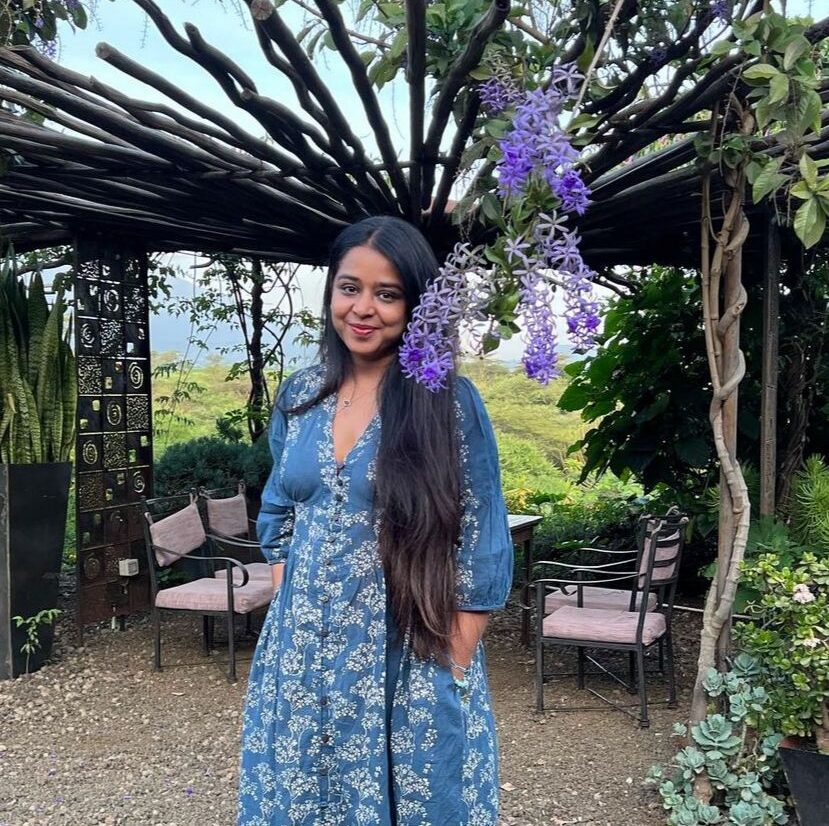It’s easy for stress levels to skyrocket this time of the year. The hustle at work is real, and with a schedule that is more jam-packed then ever, all the family commitments and parties can get overwhelming. How does one unwind and relax in the middle of all this? Enter: yoga.
“Yoga believes in managing stress at all three levels—physical, mental and emotional—to infuse a sense of overall well-being and positivity,” says Sandeep Agarwalla, head of yoga at Ananda in Himalayas, India. Mumbai-based yoga instructor Tara Menezes also suggests focusing on your breath to centre yourself, which can be done anytime, anywhere. “Whenever you feel anxious, you will find your chest heavy and your breathing uneven. The hack to instantly calm your mind is to watch your breath. Start with equal breathing, with four counts inhale and four counts exhale,” she says.
We got Agarwalla and Menezes to let us in on their most preferred yoga poses and breathing exercises to reduce stress, and asked two more experts—Hari Prakash, yoga instructor at Kairali Ayurvedic Group, and Dr Shailendra Chaubey, medical director at Vedary—for theirs too. Scroll ahead for the ones they listed.
1) Bharamri pranayama humming bee breath
Prakash shares a step-by-step guide to acing this breathing technique. Firstly, sit in a comfortable meditation asana, preferably padmasana. “Close the eyes and relax the whole body. The lips should remain gently closed with the teeth slightly separated throughout the practice. This allows the sound vibration to be heard and felt more distinctly,” he explains. “Raise the arms sideways and bend the elbows, bringing the hands to the ears. Use the index or middle finger to plug the ears, or press the flaps of the ears without inserting the fingers. Bring the awareness to the centre of the head, and keep the body absolutely still. Inhale through the nose, and exhale slowly, in a controlled manner, while making a deep, steady humming sound like that of the black bee. This is one round,” he continues. The vibration of the humming sound creates a soothing effect on the mind and nervous system. This relieves stress and cerebral tension, and also helps alleviate anger, anxiety and insomnia, thus increasing the healing capacity of the body.
2) Vajrasana
“Vajrasana alters the flow of blood and nervous impulses in the pelvic region and strengthens the pelvic muscles,” says Prakash. “Kneel on the floor with the knees close together. Bring the big toes together and separate the heels. Lower the buttocks onto the inside surface of the feet, with the heels touching the sides of the hips. Place the hands on the knees, palms down. The back and head should be straight but not tense. Avoid excessive backward arching of the spine. Close your eyes, relaxing the arms and the whole body. Breathe normally and fix the attention on the flow of air passing in and out of the nostrils.” By improving the circulation in the body, it also softens and relaxes the muscles in your body.
3) Spinal twists
Dr Chaubey suggests yoga postures that can be done anywhere, especially in an office, to relieve stress, as we tend to feel more anxious when trapped in spaces without sunlight and fresh air. “One of the ways to relax your body and mind before an important meeting or a messy discussion is to sit upright on the chair, and turn the right arm backwards, with the left hand holding the right arm of the chair. Slowly turn the torso to the right,” he says. This releases any stress that your muscles are holding on to.
4) Nadi sodhan pranayama
“This is one of the best techniques to create a balance between the two hemispheres of the brain, leading to internalisation and relaxation,” says Agarwalla. To practice alternate nostril breathing, he recommends sitting in a comfortable position with your legs crossed. Exhale completely, and use your right thumb to close your right nostril. Inhale through your left nostril and then close the left nostril with your fingers. Open the right nostril and exhale through this side. This practice has a sedative, calming effect on the body, so it is best done when you can’t sleep or focus due to anxiety or pain.
5) Marjari asana
According to Agarwalla, this is an excellent pose to bend the spine in both upward and downward directions, releasing all the tensions in between the vertebras. Derived from the Sanskrit word Marjari, which means cat, it a pose that stretches the spine and back muscles to promote flexibility and release all the tension trapped in them. To practice this, start by sitting in Vajrasana. Lean forward and place the palms flat on the floor, keeping them in line with the knees. Inhale and raise the head. Your spine will automatically move into a concave shape. Exhale and lower the head while stretching the spine in the upward direction to finish.
6) Surya namaskar
Menezes recommends getting back to the basics with surya namaskar (also called sun salutations), a sequence of 12 potent postures where every limb in the body is stretched to release tensions. “Nothing like breaking into a sweat [with] surya namaskar, whether [as] fast paced ashtanga or [in a] slow yin class. Bringing in the breath element will help you to focus and become calmer.” Besides relaxing the mind, surya namaskar also strengthens the immune system.





